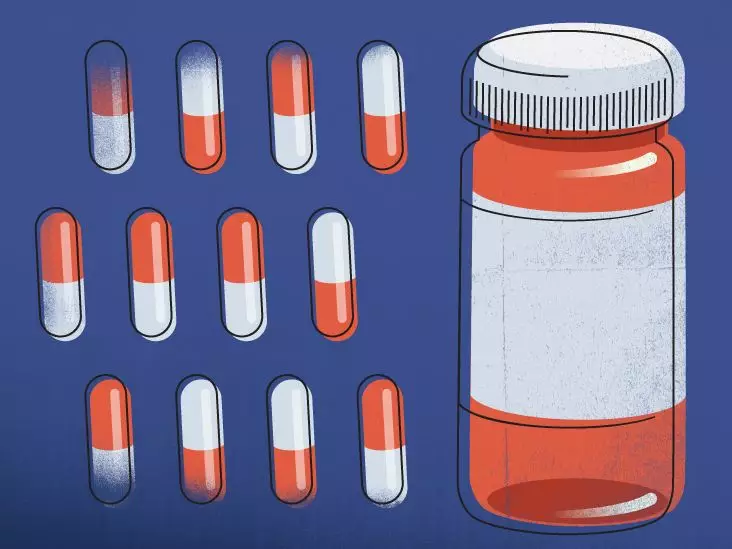Vraylar, generically known as cariprazine, serves as a significant player in the realm of psychiatric medication. Its primary function is to address several mental health conditions such as schizophrenia and bipolar disorder. Yet, the intricacies of how Vraylar affects the brain and body remain a topic of ongoing research and debate among medical professionals. This article aims to elucidate the mechanisms by which Vraylar operates, its effects on various psychological symptoms, its pharmacokinetics, and essential considerations associated with its use.
At the core of Vraylar’s effectiveness is its mechanism of action, involving the intricate balance of neurotransmitters, particularly dopamine and serotonin. Neurotransmitters are the biochemical messengers that transfer signals within the brain and across the nervous system, playing a crucial role in mood regulation, cognitive function, and overall behavior. An imbalance in the levels of these neurotransmitters can lead to debilitating symptoms, including depression, mania, and psychotic episodes.
Vraylar acts primarily as a partial agonist at dopamine D2 receptors and serotonin 5-HT1A receptors, while also functioning as an antagonist at serotonin 5-HT2A receptors. This unique profile allows Vraylar to stabilize dopamine and serotonin levels, addressing both the motor and emotional symptoms commonly associated with mental illnesses like schizophrenia and bipolar disorder. However, despite its usage, the precise interaction and regulation of these neurotransmitters still demands further exploration.
The diverse array of symptoms that Vraylar can alleviate underscores its therapeutic significance. Patients often present with acute manifestations such as hallucinations or delusions during episodes of psychosis. Vraylar seeks to reduce these distressing symptoms, thereby facilitating a return to a semblance of normalcy in daily life. Additionally, for individuals experiencing mania, symptoms such as heightened agitation and racing thoughts can significantly impair functionality. By easing these severe symptoms, Vraylar provides patients with the opportunity to regain stability.
Moreover, Vraylar is also noted for its role in mitigating depressive symptoms. Many individuals with mood disorders experience overwhelming feelings of sadness, hopelessness, and guilt. With Vraylar, there is potential relief from these burdensome emotions. Furthermore, the medication may address ancillary issues such as anxiety, sleep disturbances, and cognitive deficits, which are often interconnected with primary symptoms of depression and psychosis. Thus, the comprehensive effects of Vraylar highlight its utility in managing multifaceted mental health challenges.
Onset and Duration of Action
Upon initiation of treatment with Vraylar, patients may observe symptom relief within the first few days. Notably, the most immediate improvements are often seen in symptoms such as hallucinations and agitation. Yet, it is crucial to recognize that the full therapeutic effects can take several weeks to manifest fully. While patients may be inclined to discontinue the medication if they do not perceive an immediate benefit, adherence is vital for achieving a comprehensive therapeutic effect.
The pharmacokinetics of Vraylar also play a significant role in its effectiveness. The drug exhibits a half-life of approximately one week, meaning that it takes about seven days for the plasma concentration of the drug to reduce by half after cessation. Consequently, it may take about 5.5 weeks for Vraylar to diminish in the body to a level where it no longer exerts a therapeutic effect. This prolonged period of action necessitates that patients remain under the guidance of a healthcare professional throughout their treatment journey.
Essential Considerations
Despite the potential benefits of Vraylar, it is imperative for patients to remain aware of the nuances associated with its use. Each individual may respond differently to the medication, and it must be stressed that Vraylar should only be taken under the supervision of a qualified healthcare provider. Issues such as potential side effects, drug interactions, and contraindications need to be thoroughly discussed between patients and their physicians.
Vraylar exemplifies a dynamic approach to treating complex mental health conditions through its multifactorial mechanism of action. While it shows promise in stabilizing dopamine and serotonin levels and addressing a spectrum of symptoms, ongoing research remains vital for comprehensively understanding its full potential and implications in mental health care. As always, individuals considering Vraylar should engage in informed discussions with their healthcare providers to evaluate the best course of action for their specific needs.

